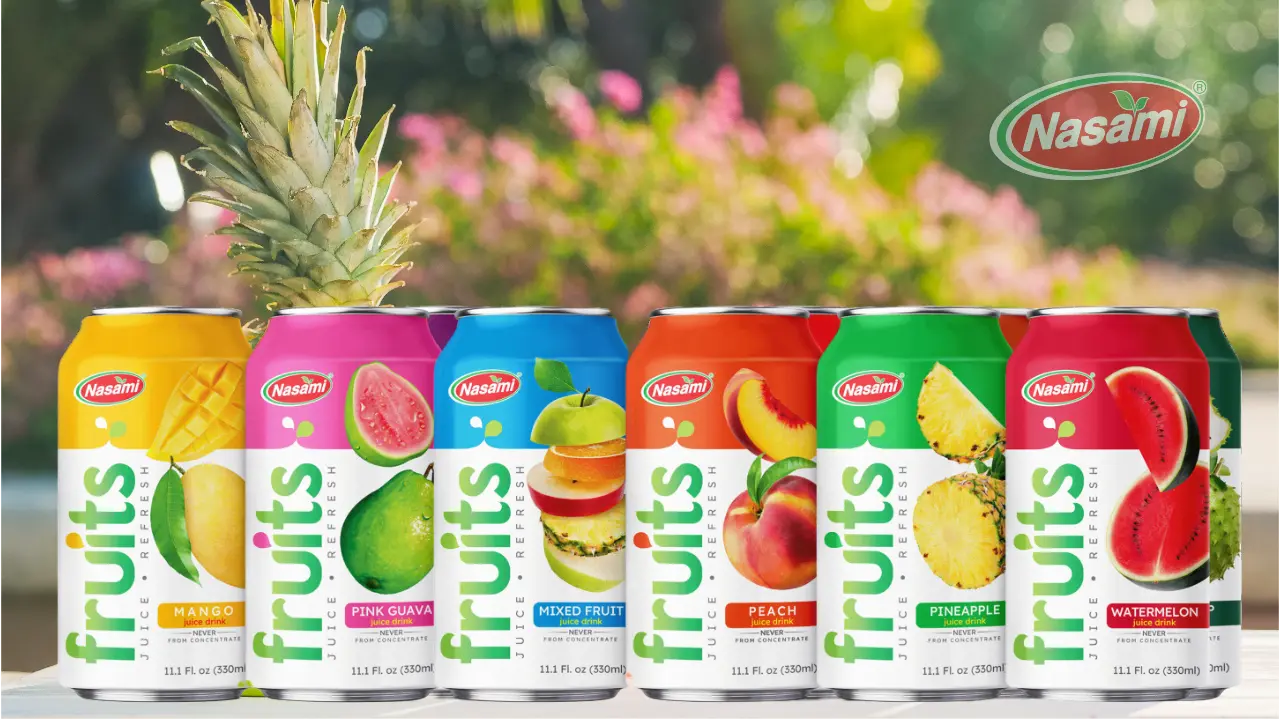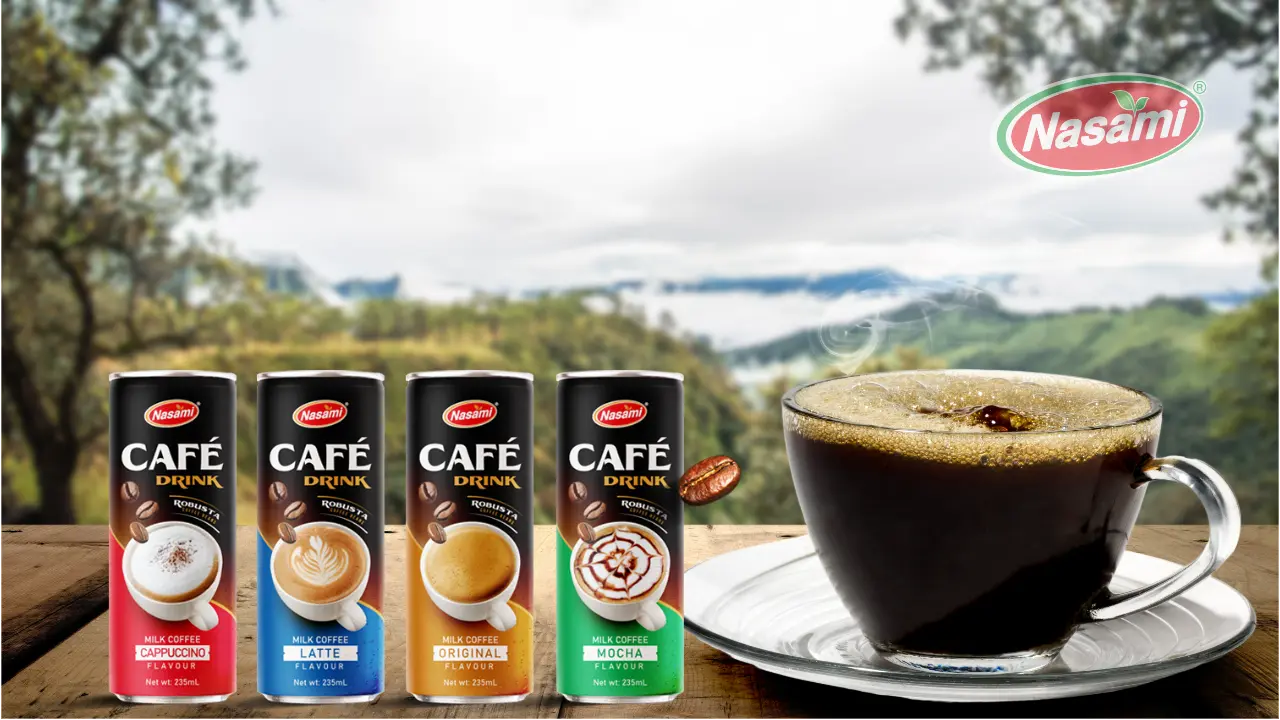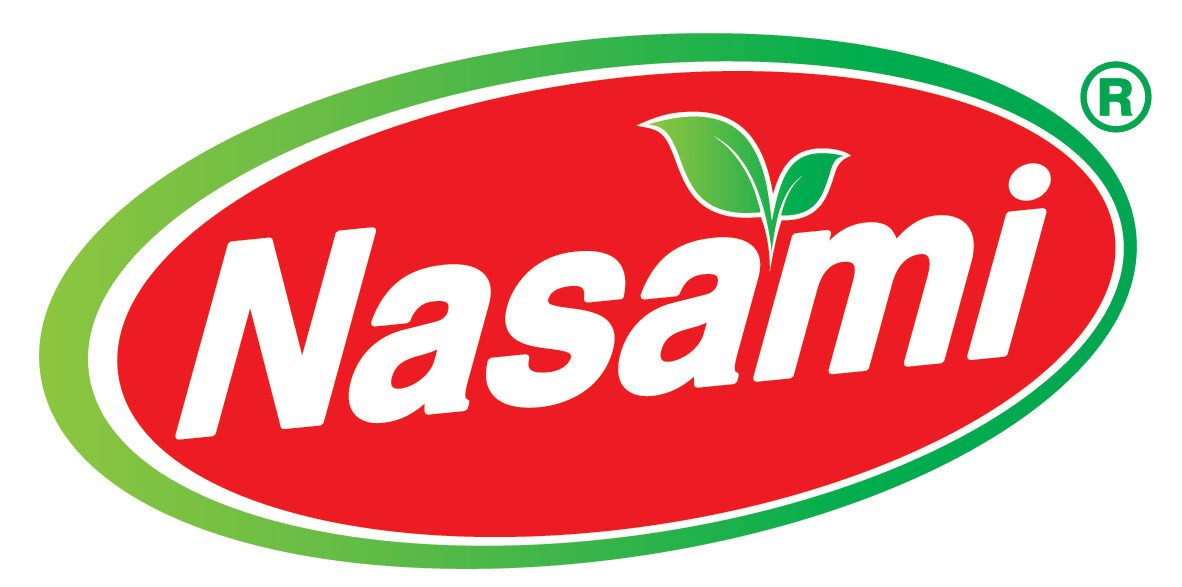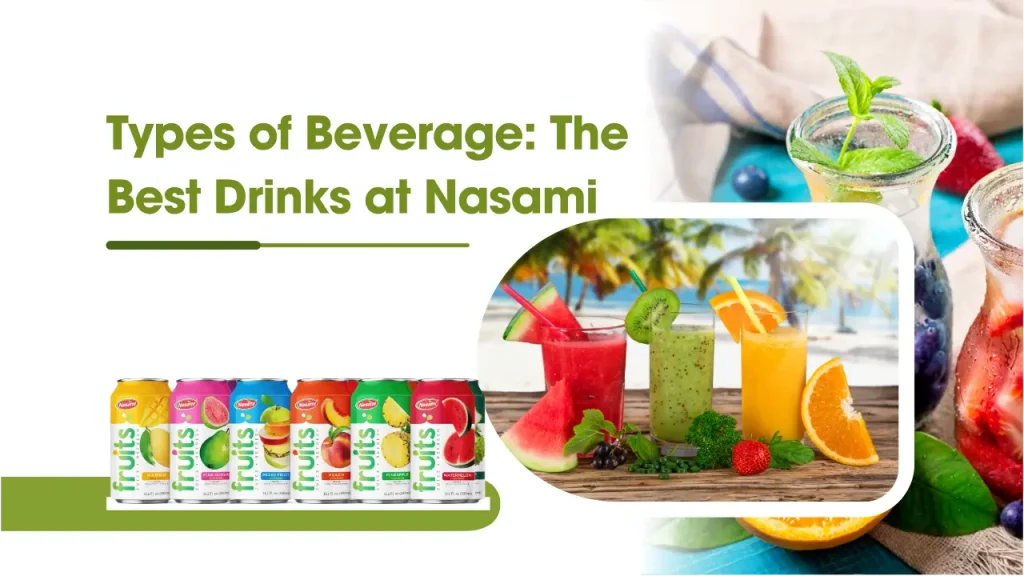Beverages are an integral part of human culture, transcending mere thirst-quenching utility to become symbols of hospitality, identity, and social interaction. The diversity in types of beverages offers us a fascinating glimpse into the values, traditions, and innovations that shape our societies around the globe.
Table of Content
ToggleFrom water’s refreshing simplicity to cocktails’ intricate flavors, each beverage tells a story narrative steeped in history, cultural significance, and evolving tastes. Understanding the various types of beverages allows us to appreciate their complexities and recognize their roles in fostering connections among people.
What is the drink?
Common beverages encompass plain water, milk, juices, smoothies, and carbonated soft drinks. Warm drinks traditionally include coffee, tea, and hot chocolate. Caffeinated beverages, which contain the stimulant caffeine, have a rich historical background. Notably, tea ranks as the second most-consumed beverage worldwide, following water. (src: Wikipedia)
The Fascinating World of Drinks
The world of drinks is nothing short of captivating, encompassing a vast array of flavors, ingredients, and preparation methods. Each type of beverage has its unique characteristics, often shaped by geographical origins, local customs, and personal preferences. This rich tapestry allows for endless exploration, discovery, and enjoyment.
For instance, consider the world of tea; it varies significantly from region to region. In China, green tea is revered for its delicate taste and health benefits, while in India, masala chai blends strong black tea with aromatic spices, creating a robust concoction cherished in everyday life. Such variances are not just culinary differences; they reflect cultural identities, rituals, and even socio-economic factors.
Moreover, new trends continually emerge as consumers seek innovative experiences. The rise of craft beverages, health-conscious options, and sustainable practices is reshaping how we approach our drink choices. This dynamic landscape provides a fertile ground for discussions around taste, health, and community impact, making beverages a multifaceted topic worthy of exploration.
Importance of Understanding Beverage Types
Understanding different types of beverages is essential for numerous reasons. First and foremost, it enhances our appreciation for the complex interplay between flavor, tradition, and health. Every drink carries with it a wealth of information, from its nutritional value to its historical significance, allowing us to make informed choices regarding what we consume.
Additionally, beverages play an essential role in social settings. They serve as catalysts for conversations, shared experiences, and communal bonds. Recognizing the cultural significance of various drinks can deepen our interactions with others and enrich our understanding of global diversity.
Furthermore, in today’s health-conscious society, awareness of beverage types aids consumers in making better dietary choices. As research continues to unveil the health implications of different drinks-both positive and negative knowledge allows us to balance indulgence with well-being. Overall, exploring the types of beverages invites us to engage with our world on multiple levels: sensory, cultural, and ethical.
Classification of Beverages
Beverages can be broadly classified into two main categories: alcoholic and non-alcoholic. This classification serves as a foundational framework for understanding the myriad options available to consumers. Each category encompasses various subtypes, which further highlights their complexity and diversity.
Alcoholic vs. Non-Alcoholic Beverages
Alcoholic beverages include any drink containing ethanol, typically produced through fermentation or distillation processes. This category encompasses a wide range of options, from beer to wine to spirits, inviting exploration into different production methods, flavor profiles, and cultural significance.
In contrast, non-alcoholic beverages encompass a diverse selection of drinks that lack any intoxicating ingredients. This category includes everything from simple water to elaborate smoothies, teas, and sodas. Non-alcoholic beverages are often celebrated for their refreshing qualities, accessibility, and versatility, making them fundamental components of daily life across cultures.
Understanding this distinction not only helps in practical contexts—such as selecting appropriate drinks for events—but also opens doors to deeper discussions around social norms, regulations, and personal preferences. The interplay between these two categories shapes our drinking culture and affects how we perceive and interact with various beverages.
Cultural Significance of Different Beverages
Every beverage carries with it a narrative deeply rooted in culture and tradition. For instance, in Mediterranean countries, wine is more than just a drink; it embodies centuries of agricultural practices, family traditions, and social rituals. Sharing a bottle of wine at dinner signifies hospitality and connection, reinforcing social ties among guests.
In many Asian cultures, tea serves a similar purpose. The Japanese tea ceremony, for example, is not merely about enjoying tea; it represents mindfulness, respect, and harmony with nature. These cultural dimensions influence how beverages are consumed and appreciated, emphasizing their role as conduits for shared experiences.
Moreover, certain beverages can symbolize national pride or identity. Think of the iconic image of Irish pubs serving stout beer or French cafes offering café au lait. These drinks have transcended their basic purposes to become emblematic of the regions they hail from, making them integral to the cultural fabric of their respective societies.
Non-Alcoholic Beverages
The realm of non-alcoholic beverages is vast and diverse, encompassing a wide variety of drinks enjoyed for their flavor, refreshment, and health benefits. Delving into this category reveals several noteworthy contenders, each with its distinct appeal and purpose.
Water: The Essential Drink
Water is undoubtedly the most critical beverage, essential for life itself. It serves as the foundation for all other drinks and plays a pivotal role in hydration, digestion, and overall health. Access to clean drinking water is a fundamental need, yet it remains a challenge for many around the world.
Beyond its basic necessity, water also assumes cultural significance in various traditions. For example, in many religions, water symbolizes purity and cleansing. Rituals involving water are common in baptism ceremonies, weddings, and other significant life events.
Furthermore, the growing trend toward flavored and sparkling waters reflects a shift in consumer preferences. Many individuals seek alternatives to sugary sodas and juices, turning instead to infused waters with fruits, herbs, or spices. Such innovations highlight water’s adaptability and its ability to meet contemporary demands while remaining fundamentally vital.
Herbal Teas: Flavor and Health Benefits
Herbal teas represent a fascinating subset of non-alcoholic beverages, often celebrated for their diverse flavors and potential health benefits. Unlike traditional teas made from the Camellia sinensis plant, herbal teas are crafted from various herbs, flowers, fruits, and spices, offering an extensive range of flavor profiles and therapeutic properties.
Chamomile tea, for example, is renowned for its calming effects, making it a popular choice before bedtime. Similarly, peppermint tea is frequently consumed for its digestive benefits. These herbal infusions provide more than just enjoyment; they serve as natural remedies that have been employed across cultures for generations.
Moreover, the art of brewing herbal teas often involves rituals that enhance the drinking experience. Whether it’s preparing a calming cup of lavender tea in the quiet moments of the morning or sharing a pot of hibiscus tea during social gatherings, these practices create connections between individuals and their heritage.
Juices: Natural Refreshments
Juices, particularly freshly pressed varieties, are another popular category of non-alcoholic beverages. From orange juice at breakfast to exotic blends featuring tropical fruits, juices provide a burst of flavor while delivering essential vitamins and nutrients.
Fruit juices often evoke feelings of nostalgia, reminding us of childhood mornings spent sipping sweet apple juice or indulging in refreshing watermelon juice during summer picnics. Beyond their emotional resonance, juices are celebrated for their health benefits, such as providing antioxidants and aiding hydration.

However, it is crucial to distinguish between 100% fruit juices and those laden with added sugars or preservatives. While fresh juices can be nutritious additions to our diets, overly processed versions may detract from their healthful qualities. Being discerning about juice choices empowers consumers to enjoy these flavorful drinks while maximizing their nutritional value.
Soft Drinks: Sweet Carbonated Choices
Soft drinks have become ubiquitous staples in many cultures, characterized by their sweetness and effervescence. This category includes everything from colas to lemonade to root beer, with each variant boasting its own flavor profile and fan base.
While soft drinks provide a refreshing escape, they often face scrutiny due to concerns over health implications, particularly linked to high sugar content and artificial additives. Consequently, many consumers are becoming increasingly mindful of their soft drink choices, driving the growth of low-sugar and alternative options such as sparkling water or naturally sweetened sodas.
The cultural significance of soft drinks is noteworthy as well. For example, soda consumption is often associated with celebrations, parties, and casual gatherings, reinforcing social connections. However, as health considerations take center stage, the beverage industry must adapt to meet changing consumer preferences by offering healthier alternatives without compromising on taste.
Iced Teas and Their Variants
Iced tea stands out as a beloved refreshment, especially during warm weather. With its roots in Southern U.S. cuisine, iced tea has evolved into a versatile beverage enjoyed throughout the world. Variants include sweet tea, green iced tea, and fruit-infused options, each bringing its spin to the classic drink.
The preparation of iced tea can be both an art and a science, with various brewing techniques and flavor combinations allowing for customization based on individual preferences. Adding fresh herbs or fruits can elevate the experience, transforming simple iced tea into a delightful concoction that tantalizes the palate.
Moreover, iced tea is often associated with leisurely moments, creating opportunities for relaxation and connection. Enjoying a glass of chilled tea on a porch or at a picnic symbolizes a carefree lifestyle, resonating with both personal and cultural narratives.
Coffee: A Global Favorite
Coffee has emerged as one of the most popular beverages worldwide, transcending borders and cultural divides. From robust espresso in Italy to smooth cold brew in the United States, each country has its unique coffee culture and brewing methods that contribute to a rich global tapestry.
This beloved beverage serves as a daily ritual for millions, offering not only a caffeine boost but also a moment of solace amid busy schedules. Coffee shops have become social hubs, where friends gather to exchange stories and colleagues convene for meetings, underscoring the drink’s role in fostering community.

As consumers become more discerning, the craft coffee movement has gained momentum, emphasizing quality sourcing, roasting, and preparation. Specialty coffee shops focus on artisanal approaches, showcasing single-origin beans and innovative brewing techniques. This trend encourages education and appreciation, transforming coffee from a simple pick-me-up into a sophisticated experience.
Milk and Dairy-Based Beverages
Milk and dairy-based beverages offer a comforting choice for many individuals, with options ranging from traditional cow’s milk to plant-based alternatives. These beverages provide essential nutrients, including calcium and protein, making them integral to many diets.
Dairy products like yogurt and kefir also fall within this category, bringing along unique textures and flavors that contribute to culinary versatility. Smoothies, milkshakes, and lassis are just a few examples of how milk can be transformed into delightful beverages that cater to various tastes.
In recent years, the rise of lactose-free and plant-based milk alternatives such as almond, oat, and soy milk reflects a shift towards inclusivity and sustainability in beverage choices. Consumers are increasingly aware of dietary restrictions and environmental impacts, prompting innovation in the dairy sector to accommodate diverse preferences.
Alcoholic Beverages
The category of alcoholic beverages encapsulates a wide range of options, each with distinctive characteristics that invite exploration and appreciation. From traditional brewing methods to modern mixology, alcoholic drinks are intricately woven into the cultural fabric of societies around the world.
Beer: The Brewed Tradition
Beer is one of the oldest and most widely consumed alcoholic beverages globally, with roots tracing back thousands of years. Produced primarily from malted grains, hops, yeast, and water, beer offers endless variations in flavor, aroma, and style.
Microbreweries and craft breweries have sparked a renaissance in beer production, encouraging innovation and experimentation. Local ingredients, inventive brewing techniques, and unique flavor combinations allow brewers to create distinct offerings that reflect regional characteristics.
Moreover, beer culture fosters a sense of community. Pubs and breweries serve as social spaces where people gather to share stories over pints, reinforcing friendships and creating lasting memories. This communal aspect of beer drinking underscores its significance beyond mere consumption.
Wine: Culture and Ceremony
Wine holds a prestigious position in many cultures, synonymous with celebration, sophistication, and tradition. The process of winemaking is an art form that reflects the interplay between nature and human craftsmanship, resulting in an array of styles—from bold reds to crisp whites and everything in between.
Wine tastings and vineyard tours provide enthusiasts with opportunities to explore the subtleties of flavor, aroma, and terroir. Pairing wine with food elevates dining experiences, promoting a deeper understanding of how flavors complement one another.
In many cases, wine becomes a central element in ceremonial occasions, such as weddings, anniversaries, and religious rituals. Its presence signifies joy, abundance, and connection, demonstrating the profound impact that this beverage has on human relationships.
Spirits: Distillation and Craftsmanship
Spirits encompass a variety of distilled beverages, including vodka, whiskey, rum, and gin, each with its unique attributes and production methods. The distillation process creates concentrated flavors and higher alcohol content, making spirits integral to cocktail culture.
Craft distilleries have emerged in recent years, emphasizing artisanal production and local ingredients. Innovative cocktails showcase the creativity of bartenders, inviting patrons on flavor journeys that challenge traditional notions of drinking.
Like beer and wine, spirits carry cultural significance, often tied to specific regions or countries. The whiskey traditions of Scotland, the tequila production of Mexico, and the gin revival in England reveal how beverages can reflect geographic identity and heritage.
Cocktails: Creative Mixology
Cocktails epitomize the fusion of art and science in the beverage world. From classic concoctions like the Old Fashioned to contemporary creations featuring exotic ingredients, cocktails offer endless possibilities for exploration and enjoyment.
The cocktail renaissance has ignited a passion for mixology, fostering a thriving community of bartenders who approach cocktail creation with creativity and precision. Seasonal ingredients, house-made syrups, and innovative garnishes elevate the cocktail experience, inviting consumers to savor every sip.
Cocktails also embody social dynamics, often associated with celebratory occasions, nightlife, and special gatherings. Whether enjoyed at a trendy bar or crafted at home for friends, cocktails facilitate connections and create unforgettable moments.
Traditional Drinks Across Cultures
Each culture boasts its unique traditional drinks that reflect local customs, ingredients, and rituals. For instance, sake in Japan embodies a deep-rooted tradition of rice cultivation and fermentation, often enjoyed during significant ceremonies and celebrations.
In Mexico, mezcal serves as a symbol of cultural identity, highlighting the importance of agave plants and artisanal production methods. Similarly, chai in India represents warmth and hospitality, commonly offered to guests as a gesture of welcome.
These traditional beverages not only celebrate heritage but also provide insights into the values, beliefs, and practices of communities. Understanding and appreciating these drinks fosters cross-cultural connections and enriches our global perspectives.
The Role of Beverages in Social Interactions
Beverages serve as powerful tools for social interaction, offering opportunities for connection, communication, and cultural exchange. From casual gatherings to formal occasions, the act of sharing a drink fosters relationships and strengthens bonds among individuals.
Beverages as a Medium for Communication
The choice of beverage often communicates unspoken messages, reflecting personal taste, social status, or cultural background. For instance, opting for fine wine at a formal event may convey sophistication, while choosing craft beer at a casual gathering signifies a laid-back attitude.
Moreover, the rituals surrounding beverage consumption create spaces for dialogue and connection. Toasting with a glass during celebratory moments invites participants to express gratitude, joy, and camaraderie, reinforcing group dynamics.
Beverages also bridge gaps across cultures. Sharing traditional drinks with individuals from different backgrounds encourages curiosity and understanding, fostering meaningful conversations that transcend language barriers.
Drinking Rituals Worldwide
Every culture boasts its drinking rituals, enriching the experiences surrounding beverage consumption. These rituals often carry historical significance and convey sentiments of respect, hospitality, and honor.
In Japan, the tea ceremony exemplifies the meticulous attention to detail and mindfulness in beverage consumption. Participants engage in a choreographed process that emphasizes aesthetics, symbolism, and connection to nature.
Similarly, the practice of clinking glasses during toasts in Western cultures embodies goodwill and camaraderie. These rituals create memorable moments, establishing a sense of belonging and unity among participants.
Social drinking scenarios also vary widely. The Italian aperitivo tradition, for instance, promotes leisurely gatherings before dinner, fostering conversation and relaxation. Understanding these customs enhances our appreciation of cultural diversity and the power of beverages to bring people together.
Health Aspects of Beverages
With the increasing emphasis on health and wellness, understanding the nutritional aspects of beverages has become paramount. The choices we make regarding what we drink can significantly impact our overall well-being.
Nutritional Value of Various Drinks
Different types of beverages carry varying nutritional profiles, influencing dietary choices and health outcomes. For instance, beverages like water, herbal teas, and fresh juices are often lauded for their hydrating properties and vitamin content.
Conversely, sugary drinks like sodas and energy drinks pose health risks due to their high-calorie content and potential links to obesity and diabetes. Awareness of these disparities empowers consumers to opt for healthier alternatives that support their well-being.
Additionally, the growing interest in functional beverages-drinks fortified with vitamins, and minerals, or probiotics-highlights the demand for products that offer health benefits beyond basic hydration. This trend reflects shifting consumer priorities toward holistic health and wellness.
Exploring the Health Benefits of Herbal Teas
Herbal teas have gained recognition not only for their delightful flavors but also for their potential health benefits. Many herbal infusions are celebrated for their therapeutic properties, addressing various health concerns.
For example, ginger tea is praised for aiding digestion and reducing inflammation, while chamomile tea is known for its calming effects. The synergy between flavors and health benefits positions herbal teas as appealing choices for health-conscious consumers seeking natural remedies.
Furthermore, the art of brewing herbal teas often involves mindfulness and ritual, enhancing the overall experience. Taking a moment to steep tea and savor its aroma aligns with wellness practices that prioritize self-care and reflection.
The Impact of Alcohol Consumption on Health
Alcohol consumption presents a complex dichotomy—while moderate consumption may offer some health benefits, excessive intake poses risks. Understanding the relationship between alcohol and health requires nuance and informed decision-making.
Moderate alcohol consumption has been linked to certain cardiovascular benefits, such as improved heart health and social bonding. However, excessive drinking is associated with a multitude of health issues, including liver disease, addiction, and mental health disorders.
Health authorities advocate for moderation and encourage individuals to be aware of their drinking habits and limits. The growing trend toward mindful drinking reflects a desire to balance enjoyment with health considerations, prompting consumers to reassess their relationship with alcohol.
Beverage Trends and Innovations
The beverage landscape is ever-evolving, driven by changing consumer preferences, emerging health trends, and sustainability initiatives. Understanding these trends provides insight into the future of the beverage industry and its impact on consumption patterns.
Rise of Health-Conscious Drinks
Health-conscious choices have become increasingly prevalent in today’s fast-paced society. Consumers are gravitating toward beverages that align with their wellness goals, including low-calorie drinks, functional beverages, and herbal infusions.
Smoothies packed with nutrient-rich ingredients, kombucha with probiotic benefits, and detox waters infused with fruits and herbs exemplify the shift toward health-oriented options. This trend not only reflects changing dietary needs but also heightens awareness surrounding ingredient transparency and quality.
Additionally, brands are investing in research to promote the health benefits of their products, catering to a growing demographic of health-savvy consumers. As a result, the beverage market is witnessing an influx of innovative formulations designed to address specific health concerns.
Craft Beverages and Local Ingredients
Craft beverages have carved a niche in consumer preferences, emphasizing artisanal techniques and locally sourced ingredients. This trend fosters a connection to the land and supports local economies, with consumers increasingly valuing authenticity and craftsmanship in what they drink.
From craft beers brewed with regional hops to small-batch spirits made from locally grown fruits, the craft beverage movement celebrates regional flavors and uniqueness. This approach not only enhances the drinking experience but also cultivates a sense of community among producers and consumers alike.
Furthermore, craft beverages often incorporate innovative flavor combinations, pushing boundaries and inviting exploration. Enthusiasts are encouraged to try new options, embracing the excitement of discovering unique local offerings.
Sustainable Practices in Beverage Production
Sustainability is an essential consideration in contemporary beverage production, as consumers become more conscious of their environmental impact. Many brands are adopting eco-friendly practices, from sourcing organic ingredients to implementing sustainable packaging solutions.
Efforts to minimize waste, reduce carbon footprints, and support fair trade contribute to a more responsible beverage industry. Consumers are increasingly drawn to companies that align with their values, prioritizing ethical practices alongside flavor and quality.
The focus on sustainability extends beyond production; it also influences consumption habits. Initiatives promoting responsible drinking, reusable containers, and waste reduction resonate with environmentally-minded individuals seeking to make a positive impact.
Notes – Types of Beverage
Maintaining proper hydration is crucial for overall health, yet individuals often overlook the importance of beverage choices in achieving this balance. Water remains the gold standard for hydration, but incorporating diverse beverages can enhance one’s diet while fulfilling fluid needs.
Balancing enjoyment with health considerations is paramount in today’s beverage landscape. By understanding the benefits and drawbacks of various drinks, consumers can make choices that align with their lifestyles and wellness goals.
Mistakes to Avoid
Overconsumption of sugary drinks can lead to serious health consequences, including obesity and dental issues. Individuals should be mindful of their choices and opt for healthier alternatives when possible, prioritizing hydration without excess calories.
Ignoring allergies and dietary restrictions can pose risks when consuming beverages. Awareness of ingredients and potential allergens ensures a safe and enjoyable drinking experience, promoting well-being.
Misunderstanding cultural significance can lead to unintended disrespect or offense. Approaching beverages with curiosity and openness fosters an appreciation for diverse traditions and practices, enhancing cross-cultural exchanges.
Frequently Asked Questions
What are the most popular types of beverages worldwide?
Worldwide, water, tea, coffee, and beer rank among the most popular types of beverages. Their universal appeal and cultural significance contribute to their prominence across regions.
How do cultural traditions influence beverage choices?
Cultural traditions shape beverage choices through historical practices, dietary customs, and social rituals. These influences inform preferences, popularity, and the meanings attached to specific drinks.
Are there any health risks associated with certain beverages?
Certain beverages, particularly those high in sugar or alcohol, can pose health risks when consumed excessively. Being aware of these potential risks aids individuals in making informed choices.
What should I consider when choosing a drink for an occasion?
Consider the occasion’s theme, guests’ preferences, dietary restrictions, and cultural significance when selecting drinks. Offering a variety of options ensures inclusivity and enjoyment for all attendees.
Exploring the diverse types of beverages unveils a rich tapestry of culture, tradition, and innovation woven into our daily lives. From the revitalizing essence of water to the artistry behind craft cocktails, each drink reflects societal values and personal choices. The significance of beverages extends far beyond mere consumption; they foster connections, create memories, and evoke emotions, shaping our experiences and interactions.
Engaging with this world of beverages encourages us to appreciate the nuances and complexities of what we drink. As we navigate through evolving trends, health considerations, and cultural significance, understanding and celebrating the diversity of beverages enriches our lives and broadens our horizons. Ultimately, each sip we take contributes to a larger narrative narrative intertwined with our identities, histories, and shared humanity.

